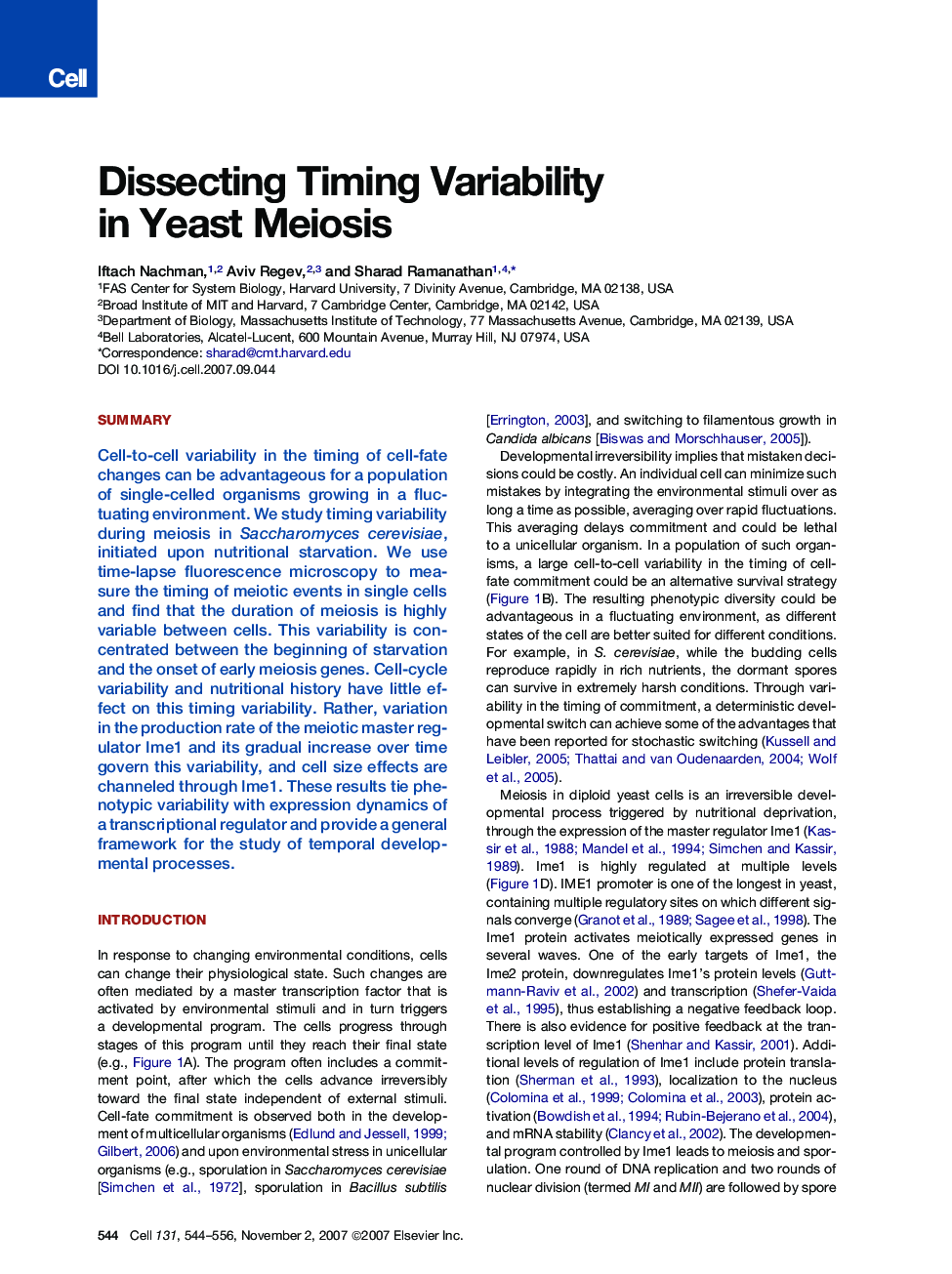| Article ID | Journal | Published Year | Pages | File Type |
|---|---|---|---|---|
| 2038195 | Cell | 2007 | 13 Pages |
SummaryCell-to-cell variability in the timing of cell-fate changes can be advantageous for a population of single-celled organisms growing in a fluctuating environment. We study timing variability during meiosis in Saccharomyces cerevisiae, initiated upon nutritional starvation. We use time-lapse fluorescence microscopy to measure the timing of meiotic events in single cells and find that the duration of meiosis is highly variable between cells. This variability is concentrated between the beginning of starvation and the onset of early meiosis genes. Cell-cycle variability and nutritional history have little effect on this timing variability. Rather, variation in the production rate of the meiotic master regulator Ime1 and its gradual increase over time govern this variability, and cell size effects are channeled through Ime1. These results tie phenotypic variability with expression dynamics of a transcriptional regulator and provide a general framework for the study of temporal developmental processes.
